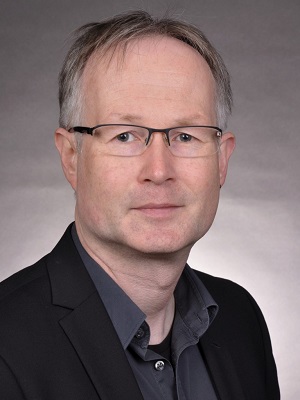Digital Holographic Microscopy Techniques for Applications in Cytometry and Histology
Hosted By: Holography and Diffractive Optics Technical Group
01 June 2021 10:00 - 11:00
Eastern Time (US & Canada) (UTC -05:00)In recent years, quantitative phase imaging (QPI) has been improved for high-resolution label-free quantitative microscopy. Digital holographic microscopy (DHM), an interferometry-based variant of QPI, can be modularly integrated into common optical microscopes and provides quantitative phase imaging by detection of specimen induced optical path length changes against the surrounding environment.
As the reconstruction of the digitally captured holograms is performed numerically, multi-focus imaging of specimen parts in different layers and subsequent autofocusing from single captured digital holograms without mechanical focus realignment is achieved. DHM requires only low light intensities for object illumination and minimizes the interaction with the sample. This is essential for minimally invasive quantitative long-term monitoring of living cell cultures. DHM-based phase contrast imaging simplifies automated object tracking, image segmentation for quantification of cell migration and morphology by extraction of absolute biophysical parameters. Moreover, the evaluation of quantitative DHM phase images provides access to the cellular refractive index which is related to the cellular water content, intracellular solute concentrations and tissue density.
QPI with DHM has the potential to be used as a powerful routine tool in various areas of biomedicine and toxicity testing, such as in cell biology, cancer research, nanotoxicology, and histopathology. In this webinar hosted by the Holography and Diffractive Optics Technical Group, Björn Kemper will provide an overview of different DHM principles for multimodal quantitative imaging of living cells and unstained tissue sections as well as selected applications. The webinar will discuss how recently developed DHM concepts can be utilized to investigate the influence of drugs, toxins and nanoparticles on cell morphology, growth and motility as well as for the quantification of inflammation mediated tissue density changes. Finally, the usage of DHM for monitoring of cell culture quality and quantification of wound healing in-vitro will be demonstrated.
What You Will Learn:
- Fundamentals of DHM for quantitative imaging of biological specimen
- Applications of DHM in different biomedical areas
Who Should Attend:
- Students and researchers from the fields of optical metrology, biomedical engineering and biomedical optics as well as interested scientists from the biosciences
About the Presenter: Björn Kemper, University of Muenster
 Dr. Björn Kemper is an interdisciplinary senior researcher and principle investigator at the Biomedical Technology Center of the Medical Faculty, University of Muenster, Germany. After studying Physics, Biophysics and Biomedical Engineering at the Universities of Osnabrueck and Kaiserslautern, Germany, he received his PhD in from the Humboldt Universitaet zu Berlin, Germany, in 2001. Research interests of Dr. Kemper are optical metrology and biomedical optics with special focus on digital holography and quantitative optical microscopy for label-free imaging of biological cells and tissues. Dr. Kemper has developed various digital holographic microscopy systems and methods and demonstrated their application capabilities for quantitative phase imaging of biological specimens in multiple application fields. He is author and co-author of more 200 publications, coeditor of special journal issues on label-free imaging and quantitative phase microscopy, committee member of scientific conferences with focus on digital holographic microscopy, quantitative phase imaging, and optical metrology and reviewer for various peer reviewed journals and founding organizations.
Dr. Björn Kemper is an interdisciplinary senior researcher and principle investigator at the Biomedical Technology Center of the Medical Faculty, University of Muenster, Germany. After studying Physics, Biophysics and Biomedical Engineering at the Universities of Osnabrueck and Kaiserslautern, Germany, he received his PhD in from the Humboldt Universitaet zu Berlin, Germany, in 2001. Research interests of Dr. Kemper are optical metrology and biomedical optics with special focus on digital holography and quantitative optical microscopy for label-free imaging of biological cells and tissues. Dr. Kemper has developed various digital holographic microscopy systems and methods and demonstrated their application capabilities for quantitative phase imaging of biological specimens in multiple application fields. He is author and co-author of more 200 publications, coeditor of special journal issues on label-free imaging and quantitative phase microscopy, committee member of scientific conferences with focus on digital holographic microscopy, quantitative phase imaging, and optical metrology and reviewer for various peer reviewed journals and founding organizations.
